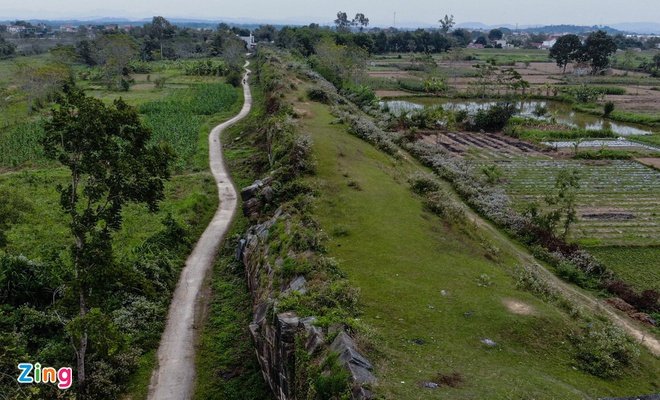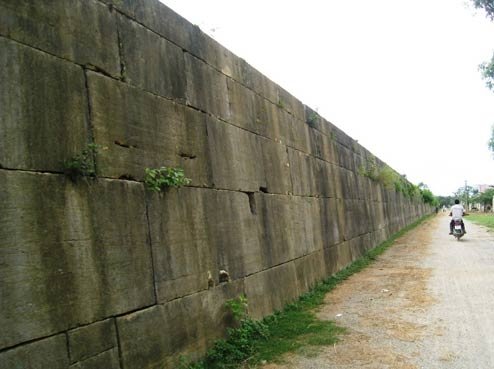Caugigu is a province towards the east, which has a king.[NOTE 1] The people are Idolaters, and have a language of their own. They have made their submission to the Great Kaan, and send him tribute every year. And let me tell you their king is so given to luxury that he hath at the least 300 wives; for whenever he hears of any beautiful woman in the land, he takes and marries her.
They find in this country a good deal of gold, and they also have great abundance of spices. But they are such a long way from the sea that the products are of little value, and thus their price is low. They have elephants in great numbers, and other cattle of sundry kinds, and plenty of game. They live on flesh and milk and rice, and have wine made of rice and good spices. The whole of the people, or nearly so, have their skin marked with the needle in patterns representing lions, dragons, birds, and what not, done in such a way that it can never be obliterated. This work they cause to be wrought over face and neck and chest, arms and hands, and belly, and, in short, the whole body; and they look on it as a token of elegance, so that those who have the largest amount of this embroidery are regarded with the greatest admiration.
NOTE 1.—No province mentioned by Marco has given rise to wider and wilder conjectures than this, Cangigu as it has been generally printed.
M. Pauthier, who sees in it Laos, or rather one of the states of Laos called in the Chinese histories Papesifu, seems to have formed the most probable opinion hitherto propounded by any editor of Polo. I have no doubt that Laos or some part of that region is meant to be described, and that Pauthier is right regarding the general direction of the course here taken as being through the regions east of Burma, in a north-easterly direction up into Kwei-chau. But we shall be able to review the geography of this tract better, as a whole, at a point more advanced. I shall then speak of the name CAUGIGU, and why I prefer this reading of it.
I do not believe, for reasons which will also appear further on, that Polo is now following a route which he had traced in person, unless it be in the latter part of it.
M. Pauthier, from certain indications in a Chinese work, fixes on Chiangmai or Kiang-mai, the Zimmé of the Burmese (in about latitude 18° 48' and long. 99° 30') as the capital of the Papesifu and of the Caugigu of our text. It can scarcely however be the latter, unless we throw over entirely all the intervals stated in Polo's itinerary; and M. Garnier informs me that he has evidence that the capital of the Papesifu at this time was Muang-Yong, a little to the south-east of Kiang-Tung, where he has seen its ruins.[1] That the people called by the Chinese Papesifu were of the great race of Laotians, Sháns, or Thai, is very certain, from the vocabulary of their language published by Klaproth.
[Illustration: Script Pa-pe.]
Pauthier's Chinese authority gives a puerile interpretation of Papesifu as signifying "the kingdom of the 800 wives," and says it was called so because the Prince maintained that establishment. This may be an indication that there were popular stories about the numerous wives of the King of Laos, such as Polo had heard; but the interpretation is doubtless rubbish, like most of the so-called etymologies of proper names applied by the Chinese to foreign regions. At best these seem to be merely a kind of Memoria Technica, and often probably bear no more relation to the name in its real meaning than Swift's All-eggs-under-the-grate bears to Alexander Magnus. How such "etymologies" arise is obvious from the nature of the Chinese system of writing. If we also had to express proper names by combining monosyllabic words already existing in English, we should in fact be obliged to write the name of the Macedonian hero much as Swift travestied it. As an example we may give the Chinese name of Java, Kwawa, which signifies "gourd-sound," and was given to that Island, we are told, because the voice of its inhabitants is very like that of a dry gourd rolled upon the ground! It is usually stated that Tungking was called Kiao-chi meaning "crossed-toes," because the people often exhibit that malformation (which is a fact), but we may be certain that the syllables were originally a phonetic representation of an indigenous name which has no such meaning. As another example, less ridiculous but not more true, Chin-tan, representing the Indian name of China, Chínasthána, is explained to mean "Eastern-Dawn" (Aurore Orientale). (Amyot, XIV. 101; Klapr. Mém. III. 268.)
The states of Laos are shut out from the sea in the manner indicated; they abound in domestic elephants to an extraordinary extent; and the people do tattoo themselves in various degrees, most of all (as M. Garnier tells me) about Kiang Hung. The style of tattooing which the text describes is quite that of the Burmese, in speaking of whom Polo has omitted to mention the custom: "Every male Burman is tattooed in his boyhood from the middle to his knees; in fact he has a pair of breeches tattooed on him. The pattern is a fanciful medley of animals and arabesques, but it is scarcely distinguishable, save as a general tint, except on a fair skin." (Mission to Ava, 151.)
[1] Indeed documents in Klaproth's Asia Polyglotta show that the Papé state was also called Muang-Yong (pp. 364-365). I observe that the river running to the east of Pu-eul and Ssemao (Puer and Esmok) is called Papien-Kiang, the name of which is perhaps a memorial of the Papé.
[The old Laocian kingdom of Xieng-mai [Kiang-mai], called Muong-Yong by the Pa-y, was inhabited by the Pa-pe Si-fu or Bát-bá T'úc-phu; the inhabitants called themselves Thai-niai or great Thai. (Devéria, Frontière, p. 100. Ch. ix. of the Chinese work Sze-i-kwan-kao is devoted to Xieng-mai Pa-pe), which includes the subdivisions of Laos, Xieng Hung [Kiang Hung] and Muong-Ken. (Devéria, Mél. de Harlez, p. 97.)—H.C.]










